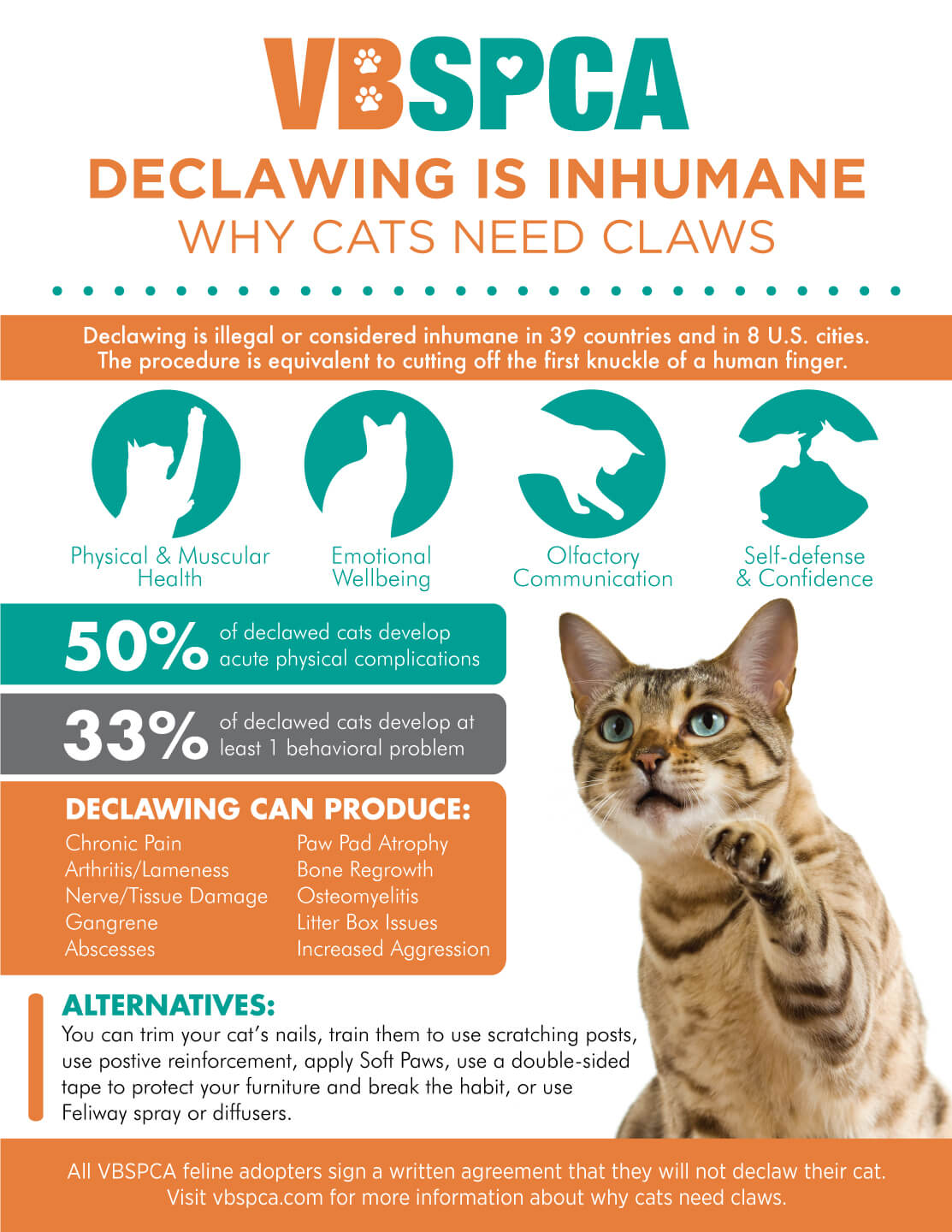Scratching is a natural and necessary behavior for cats. This behavior keeps nails and paws healthy while also stretching the body and working off excess energy. Additionally, when cats scratch an object, scent glands on the paws help establish a presence in the home, improving confidence and enhancing the feeling of comfort in the physical surroundings.
However, as much as this behavior may be necessary for a cat’s health and wellbeing, no one can deny that scratching can be destructive to the home. Scratching is one of the most common complaints from cat owners, and the first step in dealing with the unwanted behavior is understanding that scratching is a necessary piece of a cat’s wellbeing. Instead of discouraging the behavior altogether, the healthy alternative is to drive the scratching towards an option that won’t destroy the home. Read below for some helpful tips on how to encourage healthy scratching:
Scratching Posts
The best option is to use scratching tools. Place scratching posts or scratching boards in areas where you spend a lot of time. This way, your cat can create a presence in the home and positively share your favorite spaces with you. If you notice your cat continues to scratch in an unwanted area, work with that knowledge and offer a positive scratching option next to or near the established scratching spot.
Types of Scratchers
It’s important to have both vertical and horizontal scratching surfaces. Scratchers should be tall and long so your cat can stretch all the way out before pulling down/back on the surface. As for what type of cat scratcher material to use, it’s can be helpful to choose a material that is different from other items in your home. For example, if you don’t want your cat to scratch on the carpet, then don’t get scratchers covered in carpeting. This will help to reduce scratching on unwanted surfaces in the future.
No-Yes
You can also try the “No-Yes” method, which reinforces where the scratching is unwanted while providing a positive replacement location. For example, double-sided tape has an unwanted texture that causes an adverse reaction when your cat tries to scratch it. If you place the tape on the unwanted scratching spot and put a scratcher right next to it, this reinforces the “no” while redirecting the scratching to an accepted space, the “yes.” There are other textures and methods to reinforce the “no,” but double-sided tape is easy to find, inexpensive, and some brands are designed specifically to prevent scratching and are safe on fabric. You can even add extra enticement by sprinkling or spraying catnip on the scratcher.
In addition to scratching options, having a “cat-only” zone can help, too, as it offers your cat the option of a private space to retreat to when feeling moody, instead of resorting to defensive scratching. Also make sure you regularly trim your cat’s nails. This will prevent accidental scratches and snags which can trigger further scratching. Another option to consider is the use of nail coverings, which are available at most pet retail locations. You can apply nail caps to your cat’s nails yourself and they last around 4 to 6 weeks. As you can see, there are a variety of options that can help remedy unwanted cat scratching, but whatever you choose to do, DO NOT declaw your cat.
Declawing
Dr. Ann Marie Woyma, Virginia Beach SPCA’s Medical Director, explains that in order to actually prevent the nail from growing back, which is the purpose of the declawing procedure, you must remove at least half of the joint. This means declawing is bone surgery, not a nail trim. This procedure is similar to amputating every fingertip on a human hand. As the body heals, the scar tissue that forms can cause arthritis in a cat’s joints while also negatively impacting the scent glands in the paws. Since the scent glands can no longer be used appropriately, a declawed cat cannot establish a presence in the home which can lead to mental and emotional issues.
Paw sensitivity is another concern, and kitty litter may begin to irritate a cat’s paws. This irritation can lead to a negative association with using the litter box. Additionally, declawing a cat can impact a cat’s ability to positively interact with other animals and people. Declawed cats have lost a natural form of communication, so they are less likely to get along with other pets. They feel more vulnerable, so they are more likely to use biting a defense since they can no longer use a warning swat. Bottom line: the surgery puts an animal through unnecessary pain and trauma while also resulting in mental, emotional, and behavioral issues.
Declawing has become such an ethical issue that many countries that have already banned declawing procedures. The surgery is against the law in the United Kingdom, much of the European Union, Australia, and at least 10 other countries around the world. While declawing is not yet banned in all of the United States, at least five states currently have or are in the process of creating anti-declaw legislation.
The Virginia Beach SPCA does not condone declawing. All feline adopters sign a written statement agreeing that they will not declaw any cat adopted from our shelter. 




Last Updated: June 1, 2022 by vbspcaadmin
Cats Need Claws
Scratching is a natural and necessary behavior for cats. This behavior keeps nails and paws healthy while also stretching the body and working off excess energy. Additionally, when cats scratch an object, scent glands on the paws help establish a presence in the home, improving confidence and enhancing the feeling of comfort in the physical surroundings.
However, as much as this behavior may be necessary for a cat’s health and wellbeing, no one can deny that scratching can be destructive to the home. Scratching is one of the most common complaints from cat owners, and the first step in dealing with the unwanted behavior is understanding that scratching is a necessary piece of a cat’s wellbeing. Instead of discouraging the behavior altogether, the healthy alternative is to drive the scratching towards an option that won’t destroy the home. Read below for some helpful tips on how to encourage healthy scratching:
Scratching Posts
The best option is to use scratching tools. Place scratching posts or scratching boards in areas where you spend a lot of time. This way, your cat can create a presence in the home and positively share your favorite spaces with you. If you notice your cat continues to scratch in an unwanted area, work with that knowledge and offer a positive scratching option next to or near the established scratching spot.
Types of Scratchers
It’s important to have both vertical and horizontal scratching surfaces. Scratchers should be tall and long so your cat can stretch all the way out before pulling down/back on the surface. As for what type of cat scratcher material to use, it’s can be helpful to choose a material that is different from other items in your home. For example, if you don’t want your cat to scratch on the carpet, then don’t get scratchers covered in carpeting. This will help to reduce scratching on unwanted surfaces in the future.
No-Yes
You can also try the “No-Yes” method, which reinforces where the scratching is unwanted while providing a positive replacement location. For example, double-sided tape has an unwanted texture that causes an adverse reaction when your cat tries to scratch it. If you place the tape on the unwanted scratching spot and put a scratcher right next to it, this reinforces the “no” while redirecting the scratching to an accepted space, the “yes.” There are other textures and methods to reinforce the “no,” but double-sided tape is easy to find, inexpensive, and some brands are designed specifically to prevent scratching and are safe on fabric. You can even add extra enticement by sprinkling or spraying catnip on the scratcher.
In addition to scratching options, having a “cat-only” zone can help, too, as it offers your cat the option of a private space to retreat to when feeling moody, instead of resorting to defensive scratching. Also make sure you regularly trim your cat’s nails. This will prevent accidental scratches and snags which can trigger further scratching. Another option to consider is the use of nail coverings, which are available at most pet retail locations. You can apply nail caps to your cat’s nails yourself and they last around 4 to 6 weeks. As you can see, there are a variety of options that can help remedy unwanted cat scratching, but whatever you choose to do, DO NOT declaw your cat.
Declawing
Dr. Ann Marie Woyma, Virginia Beach SPCA’s Medical Director, explains that in order to actually prevent the nail from growing back, which is the purpose of the declawing procedure, you must remove at least half of the joint. This means declawing is bone surgery, not a nail trim. This procedure is similar to amputating every fingertip on a human hand. As the body heals, the scar tissue that forms can cause arthritis in a cat’s joints while also negatively impacting the scent glands in the paws. Since the scent glands can no longer be used appropriately, a declawed cat cannot establish a presence in the home which can lead to mental and emotional issues.
Paw sensitivity is another concern, and kitty litter may begin to irritate a cat’s paws. This irritation can lead to a negative association with using the litter box. Additionally, declawing a cat can impact a cat’s ability to positively interact with other animals and people. Declawed cats have lost a natural form of communication, so they are less likely to get along with other pets. They feel more vulnerable, so they are more likely to use biting a defense since they can no longer use a warning swat. Bottom line: the surgery puts an animal through unnecessary pain and trauma while also resulting in mental, emotional, and behavioral issues.
Declawing has become such an ethical issue that many countries that have already banned declawing procedures. The surgery is against the law in the United Kingdom, much of the European Union, Australia, and at least 10 other countries around the world. While declawing is not yet banned in all of the United States, at least five states currently have or are in the process of creating anti-declaw legislation.
The Virginia Beach SPCA does not condone declawing. All feline adopters sign a written statement agreeing that they will not declaw any cat adopted from our shelter.
Category: VBSPCA News Tags: Cats
Search
Ways to Give
Annual Sponsors
To view our Donor Privacy Policy, click here.